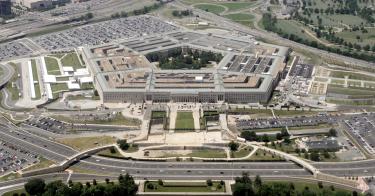A provision in the House version of the National Defense Authorization Act for fiscal 2019 would delay by at least two years a much-needed new round of Base Realignment and Closure.
That delay would represent billions of taxpayer dollars that could have been saved, but instead would have to be allocated to infrastructure that isn’t fully utilized.
What is the Base Realignment and Closure (BRAC) process, and why is it so important?
BRAC is the best process available to the Pentagon to reduce unneeded infrastructure. It allows the Defense Department to have a holistic approach to its real estate, through the assessment of its whole inventory of installations and bases for their military value.
The Pentagon then can recommend realignments or closures of bases or other installations. The process is the most feasible way to trim excess infrastructure from the defense budget.
Section 2812 of the House-passed National Defense Authorization Act requires the Defense Department to develop an infrastructure-capacity study identifying the adequacy of the current infrastructure to the force structure. It would be the third such study required in two years.
Congress largely ignored the results of both prior studies when considering the Pentagon’s request for another round of realignments and closures of bases, and has continued to press the issue of studying current infrastructure by pushing for slight changes in the methodology required.
In that regard, Section 2812 requires the Defense Department to present any deficit or surplus in infrastructure capacity, while detailing their locations within the United States. That level of detail is usually not done outside of the context of a BRAC round because it generates instability within the defense communities that host bases and other installations.
Just having excess infrastructure does not necessarily lead to a closure or a major realignment, because you need to consider the military value that each installation brings to the department.
Identifying installations in that manner would unnecessarily induce a from the real estate market and from base workers, who would assume that their jobs would possibly be moved. That’s why the previous two capacity studies did not go into that level of detail.
As Lucian Niemeyer, the assistant secretary of defense for energy, installations, and environment, said, “[t]hose [methodological] limitations, however, are a necessary element of a pre-Base Realignment and Closure … analysis that is parametric in nature, so as to avoid identifying specific installations as being at risk for closure.”
That type of limitation goes away once there’s an authorized round of BRAC, since there’s a need to look at individual installations, and the process provides ways to alleviate the effects of closures and realignments in a community.
Every year that the next round of realignments and closures of bases is delayed, an estimated $2 billion in taxpayer funds are lost in the upkeep of unused facilities. These resources would be better leveraged elsewhere in the defense budget, such as in Apache helicopters or Virginia-class submarines, as by Defense Secretary James Mattis.
As it’s currently written, Section 2812 of the National Defense Authorization Act will serve as an excuse for Congress to delay a new round of base closures and realignments until the study is done.
There’s still time for the Senate to address that in its version of the National Defense Authorization Act and for the conference committee to adjust the language when the House and Senate come together.
In the meantime, we all will just keep on paying for unneeded infrastructure.
This piece originally appeared in The Daily Signal




